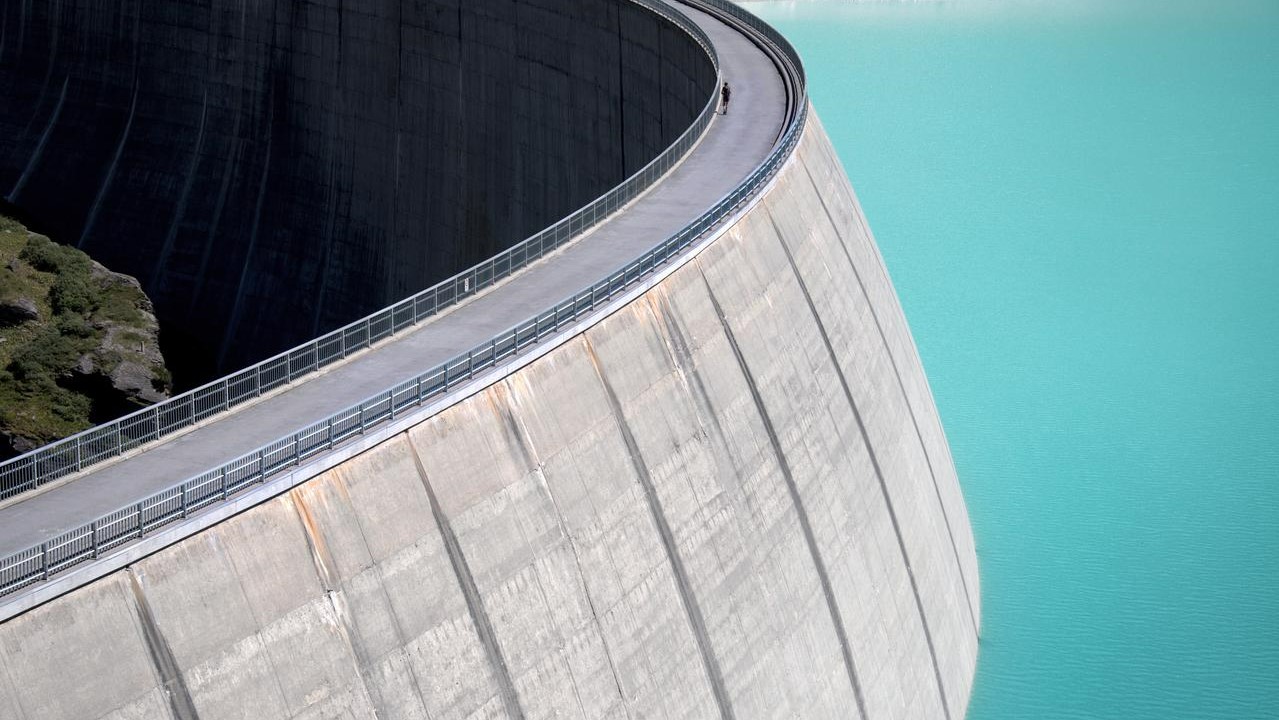

Hydropower Our effort for a sustainable future
Axpo and hydropower are a success story spanning over 100 years: in 1908, what was then called Motor AG connected its Beznau hydroelectric power plant in Aargau with the Löntsch storage plant in the canton of Glarus. This first important joint operation between a high-pressure storage and a low-pressure run-of-river power plant was taken over in 1914 by the then newly founded Nordostschweizerische Kraftwerke AG (since 2009 Axpo). NOK completed its first hydroelectric power station near Eglisau am Rhein in 1920. Today, Axpo is the largest producer of hydropower in Switzerland with its hydroelectric power plant park (own and co-owned) with around 60 systems.
In Switzerland, around 60 percent of the electricity produced comes from hydropower. That's good, because this electricity production is domestic and therefore reliable, nearly CO2-free, storable and renewable. Switzerland is well ahead in Europe – only Norway, Austria, Iceland and Albania have a higher share of hydropower electricity production.
Control centres
Amount of energy in GWh/a
Installed turbine output in MW
Find out more about our hydropower in Switzerland
We ensure a sustainable future through innovative energy solutions. Find out more.
An overview of hydro power
There are various types of hydro power plant. The most common is the so-called run-of-river plant, built on a river and using the energy of flowing water. A storage power plant, on the other hand, has a large reservoir and uses the gradient between the reservoir and the power plant to generate energy, the water flowing through large pipes or tunnels to the lower-lying power station where it drives the power generating turbines. A tidal power plant uses the power produced by the ebb and flow of the tide to generate electricity.
Run-of-river power plants use the flow of a river to produce electricity. They usually have what is termed a low head – the vertical height between water intake and discharge – and are located where there is a large volume of flowing water.
The incoming water, from upstream, is directed to the turbines. The kinetic energy generated by the flow drives the turbines, which convert this energy into electricity via generators. The electricity is then fed into the grid, while the water used to generate electricity is returned to the river downstream.
Run-of-river power plants produce base load energy and, in contrast to storage or pumped storage plants, cannot adjust the quantity of electricity as and when required. The amount of electricity produced depends on the flow and velocity of the river waters.
Small-scale hydropower plants, usually run-of-river, have an output of less than 10 MW. Often, in addition to generating electricity, run-of-river power plants serve as flood protection. Locks and fish ladders are also installed to enable the passage of shipping and fish.
A storage power plant is a hydroelectric facility that stores water in a reservoir and uses it to produce electricity as and when required. The plant uses the difference in height between the reservoir and the lower engine house to generate electricity.
Water from the reservoir is fed to the turbines through pressure pipes. The resulting kinetic energy drives the turbines, which convert the energy into electricity via generators and feed it into the power grid. The water used to generate electricity is drained, usually into a river.
As a rule, storage power plants are not in continuous operation. Instead, their task is to store water, which is produced in different ways as a result of the weather. Storage power plants come into operation when electricity consumption is at a peak due to daily or seasonal fluctuations. This makes storage power plants important suppliers of flexible peak energy, especially during the winter.
Like storage power plants, a pumped storage plant generates electricity by feeding water from the reservoir to its turbines through pressure pipes. The resulting kinetic energy drives the turbines, which convert the energy into electricity via generators and feed it into the power grid. After turbine operation, the water reaches the lower reservoir.
In contrast to pure storage power plants, however, pumped storage plants do not just generate peak energy. They can also convert excess electricity, which occurs during so-called off-peak periods, into valuable peak energy. To do this, they pump water from the lower reservoir back up to the higher reservoir and reuse it for electricity production at a later point in time. In this pumping mode, the generator works as a motor. It is supplied with electricity from the power grid.
Pumped storage is a proven method of balancing a power grid’s supply and demand in an environmentally responsible and economical way. Pumped storage plants play an important role in ensuring security of supply and stabilising electricity networks.

